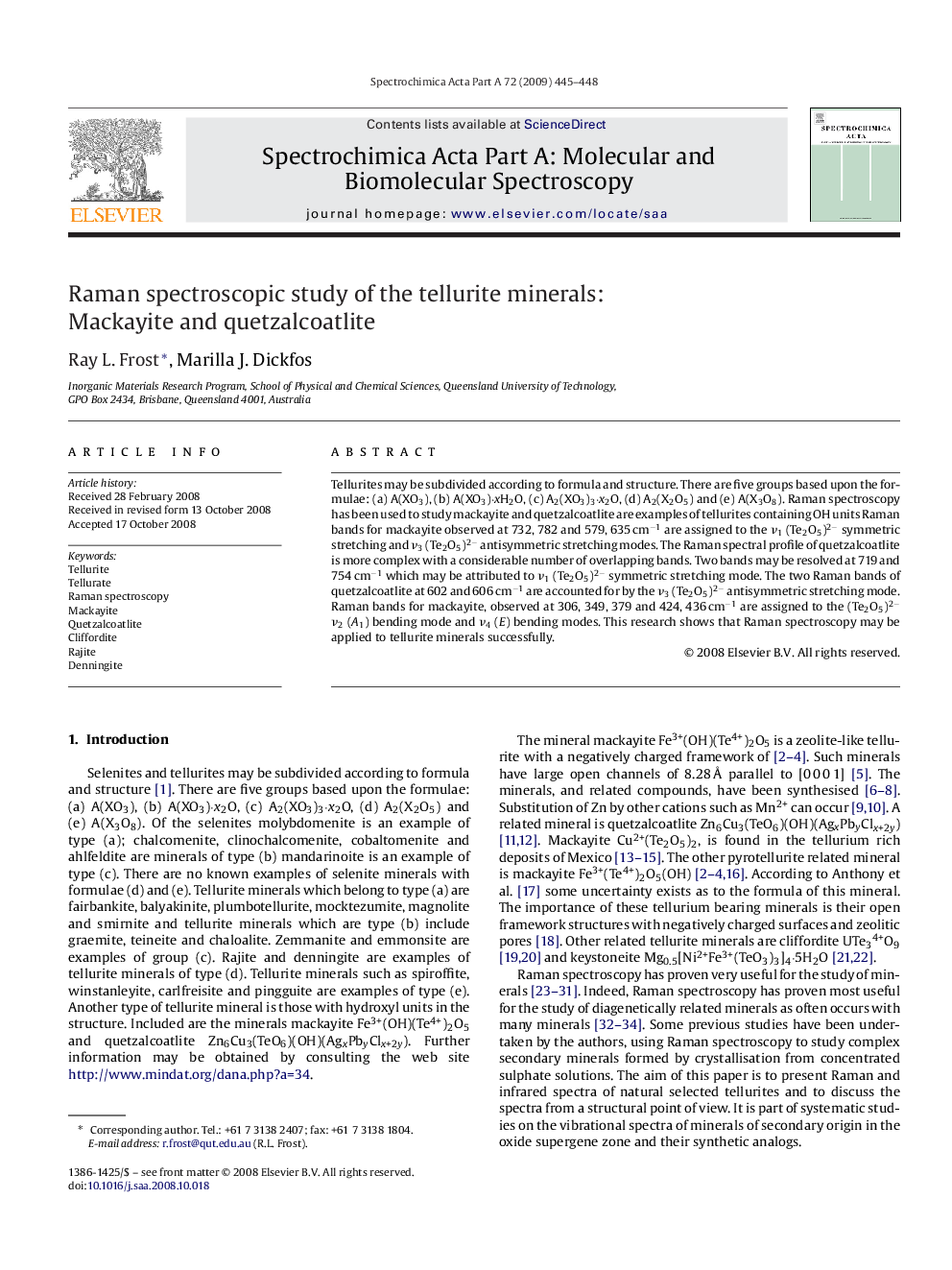| Article ID | Journal | Published Year | Pages | File Type |
|---|---|---|---|---|
| 1233655 | Spectrochimica Acta Part A: Molecular and Biomolecular Spectroscopy | 2009 | 4 Pages |
Abstract
Tellurites may be subdivided according to formula and structure. There are five groups based upon the formulae: (a) A(XO3), (b) A(XO3)·xH2O, (c) A2(XO3)3·x2O, (d) A2(X2O5) and (e) A(X3O8). Raman spectroscopy has been used to study mackayite and quetzalcoatlite are examples of tellurites containing OH units Raman bands for mackayite observed at 732, 782 and 579, 635 cmâ1 are assigned to the ν1 (Te2O5)2â symmetric stretching and ν3 (Te2O5)2â antisymmetric stretching modes. The Raman spectral profile of quetzalcoatlite is more complex with a considerable number of overlapping bands. Two bands may be resolved at 719 and 754 cmâ1 which may be attributed to ν1 (Te2O5)2â symmetric stretching mode. The two Raman bands of quetzalcoatlite at 602 and 606 cmâ1 are accounted for by the ν3 (Te2O5)2â antisymmetric stretching mode. Raman bands for mackayite, observed at 306, 349, 379 and 424, 436 cmâ1 are assigned to the (Te2O5)2â ν2 (A1) bending mode and ν4 (E) bending modes. This research shows that Raman spectroscopy may be applied to tellurite minerals successfully.
Keywords
Related Topics
Physical Sciences and Engineering
Chemistry
Analytical Chemistry
Authors
Ray L. Frost, Marilla J. Dickfos,
